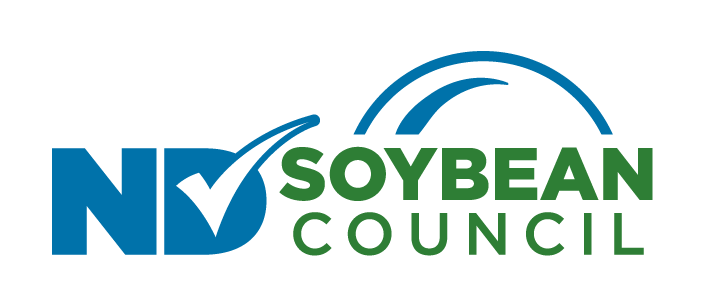North Dakota Soybean Council is proud to showcase several products and resources brought to you by soybeans!

Soy Innovations

Biodiesel
What is biodiesel? Biodiesel is a renewable fuel made from domestic, renewable sources like soybean oil. Diesel engines can run blends up to 20 percent biodiesel with no modifications.
Why should I consider using biodiesel? Biodiesel improves diesel’s lubricity, which saves wear and tear on engines in valuable farm machinery, trucks, marine equipment and passenger vehicles.
The biodiesel industry has a fuel quality program (www.bq-9000.org) that enforces stringent ASTM specifications on fuel production to ensure that only high-quality fuel goes in to your tanks.

According to the U.S. Environmental Protection Agency (EPA), biodiesel reduces greenhouse gas emissions by up to 86 percent when compared to petroleum diesel. For every unit of fossil energy it takes to produce biodiesel, 3.5 units of renewable energy are returned (the best of any U.S. fuel).
Want to know more? Visit www.biodiesel.org. For questions and assistance about diesel and biodiesel, call the Diesel Helpline at 800-929-3437 or email info@megcorpmn.com
Renewable Diesel
What is the difference between renewable diesel and biodiesel?
| Biodiesel | Renewable Diesel |
|---|---|
| Transesterification Process: Fat/oil + alcohol = biodiesel + glycerin | 2 Part Hydrotreating Process A) Fat/oil + hydrogen = saturated hydrocarbon + water + propane or CO2 B) Saturated hydrocarbon + isomerization = renewable diesel |
| Lower cost to produce | Higher capital cost, plants generally much larger |
| Ultra-low sulfur, zero aromatic, non-toxic and high cetane | Ultra-low sulfur, zero aromatic and very high cetane |
| Can be used in all engines: Often blended with petroleum diesel | Can be used in all engines: Nearly chemically identical to petroleum diesel, no blending |
| Made to meet the requirements of ASTM B5, B6-B20, and B100 blends | Made to meet the requirements of all ASTM blends |
How is renewable diesel used? Biodiesel often (but not always) requires blending prior to use; blends are often 20% biodiesel and 80% petroleum diesel (or less in colder weather).
In contrast, renewable diesel does not require blending. The two fuels are often used in combination to capture benefits from both biodiesel and renewable diesel; for example, an 80% renewable diesel 20% biodiesel blend.
Where can I find renewable diesel? Most renewable diesel produced in the U.S. is transported to states with energy initiatives to help meet their lowered emissions goals.
North Dakota is the #2 state in the U.S. in renewable diesel production.
Soy-Based Biofuels are:
Good for farmers: Based on current soybean prices, research has shown that biodiesel and renewable diesel add more than $1 of value to every bushel of soybeans grown in the U.S.
Good for North Dakota: Soybeans are a major industry in North Dakota, valuing over $2 billion in 2020. Biodiesel and renewable diesel are leading-edge fuels that support North Dakota’s economy.
Visit cleanfuels.org to discover how farmers are working to build and expand the renewable fuels industry.
Innovations in Rural Roads and Bridges
North Dakota soybean farmers invested in “Top 20 Innovations for Rural Bridge Replacement and Repair”, a resource for rural communities to improve their critical infrastructure.
“Our nation’s rural bridges serve as the initial step in a lengthy journey to the ultimate customer,” explains Mike Steenhoek, executive director of the Soy Transportation Coalition (STC). “Unfortunately, the region of the country in which bridge conditions are most severe – rural areas – also happen to be the region in which available funding to improve these conditions is stagnant or on the decline. The concern remains that if this starting line for farmers is not well-maintained, soybeans and grain will not effectively reach the finish line in delivering to our customers.”
Some of the innovative solutions for bridge replacements include Railroad Flat Car Bridges and Buried Soil Structures, among others.


“Many of the innovative concepts featured in this report can result in a 50% or greater cost savings for rural counties,” says Chris Brossart, a soybean farmer from Wolford, North Dakota, and chairman of the Soy Transportation Coalition.
You can access the Top 20 Innovations for Rural Bridge Replacement and Repair by clicking here:
Printed copies of the Top 20 Innovations for Rural Bridge Replacement and Repair can be requested from the ND Soybean Council office at 701-566-9300.
Learn more about the Soy Transportation Coalition at https://www.soytransportation.org/.
Soy-based Goodyear Tires

The Goodyear Tire & Rubber Company has agreed to phase out petroleum-derived oils from its products by 2040, and replace those with sustainably-produced U.S. soybean oil.
With the help of Soy checkoff research funding, the company’s initial research discovered that soybean oil:
- Improved tire flexibility across temperatures
- Provided enhanced grip on road surfaces
- Made it an ideal choice for Goodyear’s all-weather tire line.
The following Goodyear tire lines included soybean oil beginning in the years noted:
- Assurance® WeatherReady® consumer tire line in 2017
- Eagle® Enforcer All Weather™ in 2018
- Eagle Exhilarate™ in 2019
- Announced the Goodyear Assurance ComfortDrive™ in 2020.
For more information, click here.
For official press release, click here.
Shoes
Once just a byproduct, soybean oil is now a lucrative value driver for farmers, being used as a sustainable, environment friendly and functional replacement for petroleum in industrial products. Now, both Skechers’ shoes and Okabashi sandals utilize soybean oil.
Sketchers
Skechers’ soy-based shoes are available in stores and online now; the shoes are part of the Skechers GOrun collection. The brand shared plans to expand the range of styles and colors, including branching out into the trail, work and safety footwear categories for men, women and children. All models which utilize the soybean oil will be labeled as having Goodyear Performance Outsoles.

To learn more, click here.
Okabashi
Okabashi, an American company that counts on U.S. soy for all its sandals. Only 2 percent of shoe companies operate in the U.S., and Okabashi is proud to source American materials, including U.S.-grown soybean oil. Okabashi committed to producing its footwear with sustainable and renewable materials by using soybean oil to displace petroleum. The company’s shoes are approximately 45 percent U.S. soy by weight. U.S. soy meets Okabashi’s high standards for performance, offering both strength and softness.

Soy-based Concrete and Asphalt Extenders
- RePlay – soy-based asphalt sealant
For more information, click here.
For an article detailing application of this product, click here.
- PoreShield – soy-based concrete enhancer and preservation tool
For more information, click here.
For a video showing application of this product, click here.
Roof Maxx
Daily expansion and contraction is critical to roof performance and longevity. As a roof ages, oil dries out causing asphalt roof shingles to become brittle. This slowly breaks the roof apart, similar to the way a pothole develops on a road.
Roof Maxx is a scientifically formulated treatment, derived from soybean oil (methyl ester.) Soy-Fusion Technology enables millions of microbeads of soybean oil to quickly penetrate brittle asphalt shingles. This rejuvenates the asphalt, restoring flexibility, to facilitate daily expansion and contraction.
Treatment with Roof Maxx is 100% safe for people, pets, property and the environment. The company says work is completed in an hour, with no mess, for a fraction of the cost of a new roof.
To learn more, click here.
Other Soy Uses
Across the nation, U.S. companies are now offering hundreds of biobased products, ranging from cleaning supplies to carpet backing to energy efficient roofing materials, made with ingredients grown right here on American farms.
To learn more, please visit these websites:
To view previous webinars hosted with more information on these soy innovations, you can view the videos below:
This webinar features information on each of the soy innovations outlined below.
